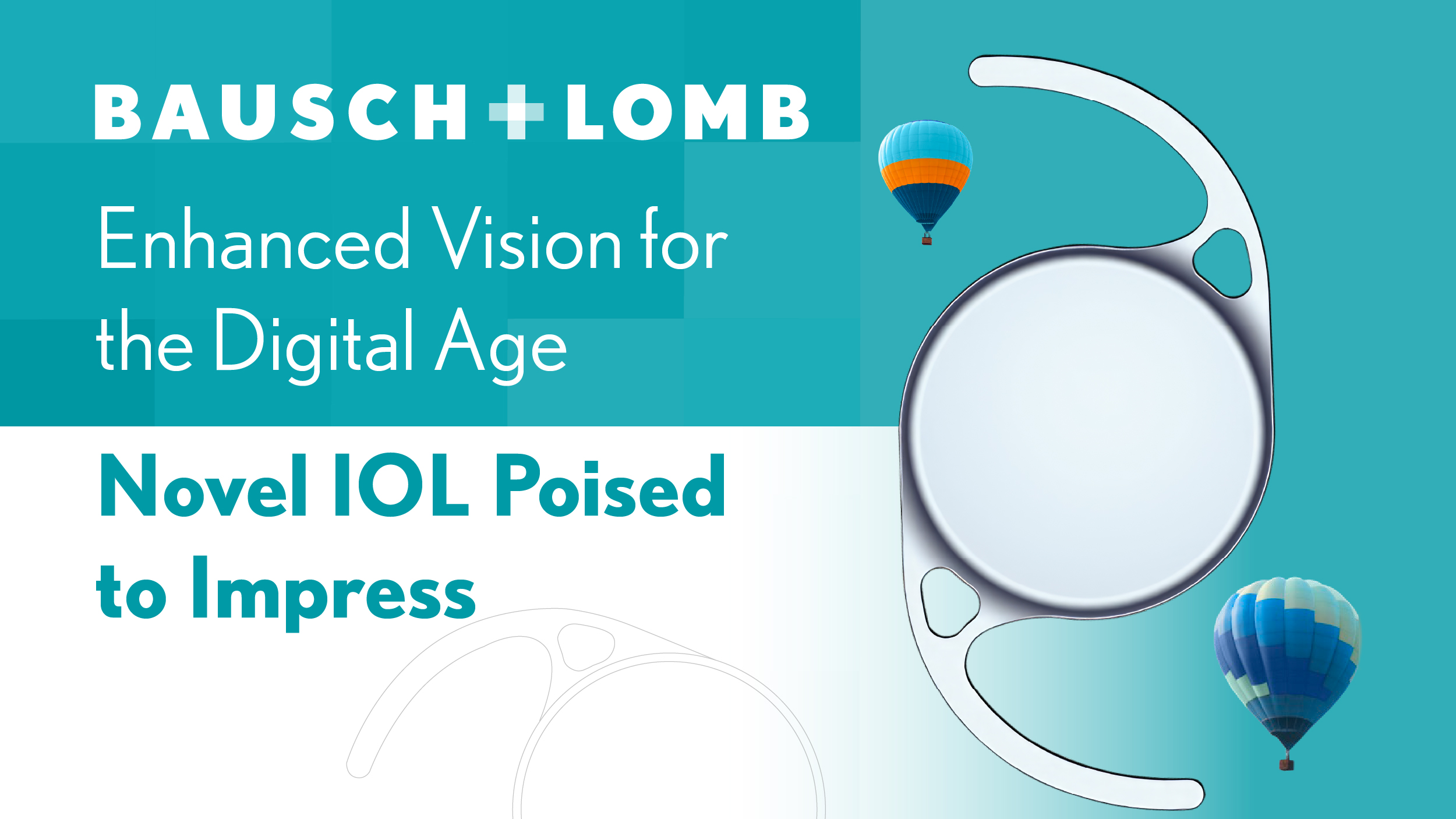Sponsored by Bausch + Lomb
Monofocal, but make it modern. The enVista ASPIRE™ is built for scrolls, swipes and surgical precision.
In today’s screen-heavy world, cataract patients aren’t just asking for good distance vision. They’re expecting clear sight across the range, especially at intermediate distances. That’s where the enVista ASPIRE™ intraocular lens (IOL) steps in.
Designed with an Intermediate Optimized (IO) central zone to meet contemporary visual demands, this novel enhanced monofocal lens will take center stage at the 37th annual meeting of the Asia-Pacific Association of Cataract and Refractive Surgeons (APACRS 2025) in Ahmedabad, where Jai G. Parekh, MD, MBA, FAAO (USA) is set to present his early clinical experience.
READ MORE: Bausch + Lomb Makes Waves with Major Announcements in Eye Care
Rethinking what “good vision” means
“Vision in 2025 is different from our expectations in 2015 or 2005,” Dr. Parekh shared in an exclusive interview with Media MICE ahead of his lecture. “Intermediate vision is very important to meet the demands of all digital devices such as iPads and smartphones.”
The enVista ASPIRE falls into a growing category of lenses often referred to as “monofocal plus.” While traditional monofocals are designed primarily for distance, this lens uses Bausch + Lomb’s (Laval, Canada) Controlled Curvature Change (3C) technology—an exclusive design aimed at offering an extended-depth-of-focus while preserving crisp distance vision.
“This proprietary technology allows me to offer patients a full range of vision using a monofocal-plus type platform,” Dr. Parekh noted. According to bench testing data shared during the presentation, the enVista ASPIRE delivers 1.25 D of continuous depth-of-focus—on par with other enhanced monofocal options.
READ MORE: How Bausch + Lomb is Safely Returning enVista® IOLs to the Market
Early findings, encouraging trends
In our conversation, Dr. Parekh previewed some of the patient-reported outcomes he will present at APACRS 2025, which show strong results across visual, refractive and satisfaction metrics.
“Patients have experienced an excellent range of vision bilaterally with an incredibly low dysphotopsia profile,” Dr. Parekh shared. That’s a big deal since extending vision range has historically come with the trade-off of unwanted visual disturbances like glare or halos.
The enVista ASPIRE’s unique optic design creates a gradual transitional distribution of light energy from center to periphery, a feature designed to minimize dysphotopsia. This is achieved through the IO central zone, which utilizes higher-order aspheric coefficients on the posterior surface.
A lens for nearly everyone?
When asked about patient selection criteria, Dr. Parekh expressed confidence in the lens’s versatility. “In my clinical experience, almost all of my patient-types have benefited from the enVista ASPIRE IOL,” he reported. “This is a true ‘modern-day monofocal-plus IOL’ giving me the ability to offer my patients an extended array of vision in both eyes.”
This broad applicability marks a shift in how surgeons approach IOL selection. Rather than reserving enhanced visual range for premium lens candidates only, the ASPIRE positions itself as an upgrade to standard monofocal lenses that can benefit a wider patient population.
Tackling astigmatism, precisely
Dr. Parekh also spotlighted the toric version of the enVista ASPIRE, designed to correct even low levels of astigmatism—down to 0.90 D OUS and 1.25 D US on the IOL plane.
“Greater accuracy, broader range of patients can be treated, and we know that even low-levels of astigmatism left uncorrected can lead to sub-optimal vision,” Dr. Parekh emphasized. “Correcting even lower amounts of astigmatism of 1.25 D (IOL plane) can truly lead to better emmetropia for our patients and excellent visual outcomes.”
READ MORE: From Nightmare to Dream Vision
The toric model also benefits from the lens’s AccuSet™ Haptics design, which supports rotational stability—crucial for optimal toric outcomes. “Rotational stability is incredibly important when implanting a toric IOL,” Dr. Parekh explained. “How we leave the patient on the operating table at the end of the case with the toric IOL in the right axis is very critical when we see the patient postoperatively for several weeks.”
He added, “Rotational instability would mean sub-optimal outcomes and the probability of going back to the OR. Precision medicine and surgery are very important in the modern day of cataract surgery including astigmatic management using toric IOLs.”
Technologies under the hood
What makes the enVista ASPIRE tick? A few key innovations: the lens’s IO optics include a central zone on the posterior surface, contributing to extended-depth-of-focus compared to standard monofocals.
The 3C technology harmonizes the geometric power profile outward between the central base power and power at the periphery. According to bench studies presented, this design maintains strong distance contrast sensitivity while stretching the functional range of vision.
The ASPIRE is also built on Bausch + Lomb’s established enVista platform, which features a glistening-free hydrophobic acrylic material. This platform has accumulated significant clinical experience globally, with millions of implantations worldwide.
READ MORE: Bausch + Lomb Returns enVista IOLs to Market Following Voluntary Recall
Meeting patients where they are
As digital device usage continues to increase globally, with adults reportedly spending more than 13 hours daily interacting with screens, the demand for IOLs that address intermediate vision needs is likely to grow.1
When asked to sum up the lens’s strengths, Dr. Parekh said, “Ease of use, optical clarity, low rate of dysphotopsias, 3C technology, rotational stability with toric platform, blended vision and excellent range of vision for our patients.”
The enVista ASPIRE represents a growing trend in cataract surgery toward lenses that better address contemporary visual needs without the compromises sometimes associated with multifocal technology. And for surgeons attending APACRS 2025, Dr. Parekh’s upcoming lecture offers the perfect opportunity to see how this “monofocal for the modern world” performs in real-world clinical settings.
Catch Dr. Parekh’s talk during the B+L symposium at APACRS on August 21, 2025, 12.45 to 1.40 PM, Seminar Hall 1, Ground Floor at MMCEC to explore the full data and hear firsthand how the enVista ASPIRE is changing the game.
Editor’s Note: Reporting for this story took place at the annual meeting of the Asia-Pacific Association of Cataract and Refractive Surgeons (APACRS 2025) on August 21-23 in Ahmedabad, India.This content is intended exclusively for healthcare professionals. It is not intended for the general public. Products or therapies discussed may not be registered or approved in all jurisdictions, including Singapore.
Reference
- UnitedHealthcare. UnitedHealthcare Screen Time Report 2020. Published 2020. Available at: https://www.uhc.com/content/dam/uhcdotcom/en/BrokersAndConsultants/UnitedHealthcare-Screen-Time-Report-2020.pdf. Accessed on June 3, 2025.


